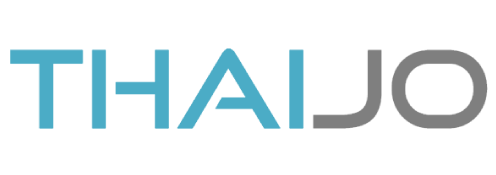Effectiveness of the Planned Teaching Program on Knowledge and Self-care Behavior of School-Age Children with Thalassemia
Keywords:
The Planned Teaching Program, Knowledge and Self-Care Behavior, School Aged Children, ThalassemiaAbstract
The objective of this one-group pretest-posttest design was to compare the scores of the knowledge and self-care behaviors of the school-aged children with thalassemia. Participants were 30 school-aged children (age 6-12) who had been diagnosed with thalassemia and enrolled in the pediatric ward at a Chiang Kham hospital in the northern part of Thailand between July and August 2022. These participants were selected by purposive sampling. The data collecting instruments included a questionnaire on demographic data, knowledge, and self-care behavior of school-age children with thalassemia. The research instrument was the improved lesson plan on self-care for children with thalassemia. The quality of the instruments was validated by three experts. The Index of Item-Objective Congruence was at 1.00. The reliabilities of self- care knowledge reported in questionnaires in school- aged with thalassemia was determined by a coefficient of 0.93 using Cronbach’s Alpha Coefficient. The data were analyzed by descriptive statistics. The mean difference scores of knowledge and self-care behavior of school age children with thalassemia were compared using a paired t-test.
The results showed that after attending the planned teaching program, the average score of knowledge of school-age children with thalassemia was significantly higher than before attending the program (p-value< 0.01). The average score of self-care behavior of school-age children with thalassemia was high, when compared to before attending the program (p-value< 0.01). This research could be a guideline for creating a program to develop a self-care ability for school-aged children with thalassemia in order to enhance their ability to take care of themselves.
References
กระทรวงสาธารณสุข. (2561). โรคโลหิตจางธาลัสซีเมียโรคทางพันธุกรรมที่น่าเป็นห่วงในประเทศไทย. สืบค้นเมื่อ 14 มิถุนายน 2565 จาก https://pr.moph.go.th/?url=pr/detail/all/02/116500.
ดิษพงศ์ วงศ์อร่าม. (2555). สื่อวิดิทัศน์ให้ความรู้เรื่องการรักษาโรค Thaiassemia เรื่อง The Thalassemia. ผลิตโดย: Dogfilm ร่วมผลิตแอนิเมชั่นให้กับ vitamin-b บรอดคาซท์. สืบค้นเมื่อ 30 มิถุนายน 2565 จาก https://youtu.be/5-PC-EM3tK0.
ทิศนา แขมมณี. (2563). ศาสตร์การสอน องค์ความรู้เพื่อการจัดกระบวนการเรียนรู้ที่มีประสิทธิภาพ. (พิมพ์ครั้งที่ 24). กรุงเทพฯ: โรงพิมพ์แห่งจุฬาลงกรณ์มหาวิทยาลัย.
ภูษณิศา มาพิลูน, ปรีย์กมล รัชนกุล และวาริยา หมื่นสง. (2559). ผลของโปรแกรมการพัฒนาความสามารถในการดูแลตนเองของเด็กวัยเรียนโรคธาลัสซีเมียและความสามารถในการดูแลเด็กของผู้ดูแลต่อพฤติกรรม ดูแลตนเองของเด็ก. วารสารสภาการพยาบาล, 31(2), 52-68.
มรกต สิทธิขันแก้ว, นงลักษณ์ จินตนาดิลก, พรรณรัตน์ แสงเพิ่ม, อทิตยา พรชัยเกตุ และโอว ยอง. (2555). ความสัมพันธ์ระหว่างการรับรู้สิ่งก่อความเครียดและอาการซึมเศร้าในวัยรุ่นโรคธาลัสซีเมีย วารสาร พยาบาลศาสตร์, 30(3), 25-35.
วรวุฒิ แสงทอง, จุฬารัตน์ ห้าวหาญ และวิจิตร แผ่นทอง. (2563). ผลของระบบสนับสนุนและให้ความรู้อย่างมีแบบแผนต่อความรู้และพฤติกรรมการดูแลตนเองของเด็กวัยเรียนโรคธาลัสซีเมีย. วารสารเครือข่ายวิทยาลัยพยาบาลและการสาธารณสุขภาคใต้, 7(2), 39-50.
เวียงพิงค์ ทวีพูน. (2563). พัฒนาการเด็กวัยเรียน. สืบค้นเมื่อ 30 มิถุนายน 2565 จาก http://blog.bru.ac.th/wp-.
ศิริยุพา สนั่นเรืองศักดิ์, นฤมล ธีระรังสิกุล และพจนารถ สารพัด. (2563). ปัจจัยทำนายพฤติกรรมการจัดการตนเองของเด็กที่ป่วยด้วยโรคธาลัสซีเมีย. วารสารสถาบันบำราศนราดูร, 14(3), 146-57.
สิทธิพงศ์ ปาปะกัง และชลิดา ธนัฐธีรกุล. (2562). ผลของโปรแกรมสนับสนุนและให้ความรู้ ด้วยสมุดภาพการ์ตูน กิจกรรมการเล่น และการเยี่ยมบ้าน ต่อพฤติกรรมการดูแลตนเองของผู้ป่วยเด็กวัยเรียนโรคธาลัสซีเมีย. วารสารพยาบาลศาสตร์และสุขภาพ, 42(4), 40-50.
สุกัญญา ฆารสิทธ์, ณัฏฐพล นนทิบุตรธีรชัย, ก้านจิต ศรีนนท์, นงค์นุช หวายแก้ว และกฤชกันทร สุวรรณพันธุ์. (2564). ประสิทธิผลของสื่อวีดีโอต่อคะแนนความรู้ของผู้ดูแลสุขภาพเด็กป่วยวัยเรียนโรคธาลัสซีเมีย. วารสารการแพทย์โรงพยาบาลอุดรธานี, 29(2), 283-294.
อรุณรัตน์ ศรีจันทรนิตย์, ปวีณา จึงสมประสงค์, ชดชนก วิจารสรณ์, วิภารัตน์ สุขทองสา, นวลจันทร์ อุดมพงศ์-ลักขณา และชญานี จตุรชัยเดช. (2557). การเปรียบเทียบผลการให้ความรู้ด้วยสื่อวีดิทัศน์กับภาพพลิกต่อความรู้และความวิตกกังวลของมารดาในการดูแลผู้ป่วยเด็กที่เข้ารับการสวนหัวใจ. วารสารพยาบาลศาสตร์, 32(2), 41-51.
Angastiniotis, M. & Lobitz, S. (2019). Thalassemias: An Overview. International Journal of Neonatal Screening, 5(1), 16.
Baghersalimi, A., et al. (2021). Evaluation of self-efficacy in children and adolescents with thalassemia major. Journal of Pediatric Hematology/ Oncology, 43(6), e754–e758.
Bajwa, H. & Basit, H. (2022). Thalassemia. United States: StatPearls Publishing.
Cohen, J. (1977). Statistical power analyses for the behavioral sciences. Hillsdale, NJ: Lawrence Earlbaum.
Orem, D. E. (2001). Nursing: Concepts of practice. 5th Edition. Mosby-Yearbook, Inc., St. Louis.
Tarım, H. S. & Öz, F. (2022). Thalassemia Major and Associated Psychosocial Problems: A Narrative Review. Iranian Journal of Public Health, 51(1), 12–18.
Van Hoozer, H. L., et al. (1987). The Teaching Process: Theory and Practice in Nursing. Norwalk, CT: Appleton-Century-Crofts.

Downloads
Published
How to Cite
Issue
Section
License
Copyright (c) 2022 Journal of Nursing and Public Health Research

This work is licensed under a Creative Commons Attribution-NonCommercial-NoDerivatives 4.0 International License.
1. บทความหรือข้อคิดเห็นใด ๆ ที่ปรากฏในวารสารวิจัยการพยาบาลและการสาธารณสุข ที่เป็นวรรณกรรมของผู้เขียน บรรณาธิการไม่จำเป็นต้องเห็นด้วย
2. บทความที่ได้รับการตีพิมพ์ถือเป็นลิขสิทธิ์ของ วารสารวิจัยการพยาบาลและการสาธารณสุข








